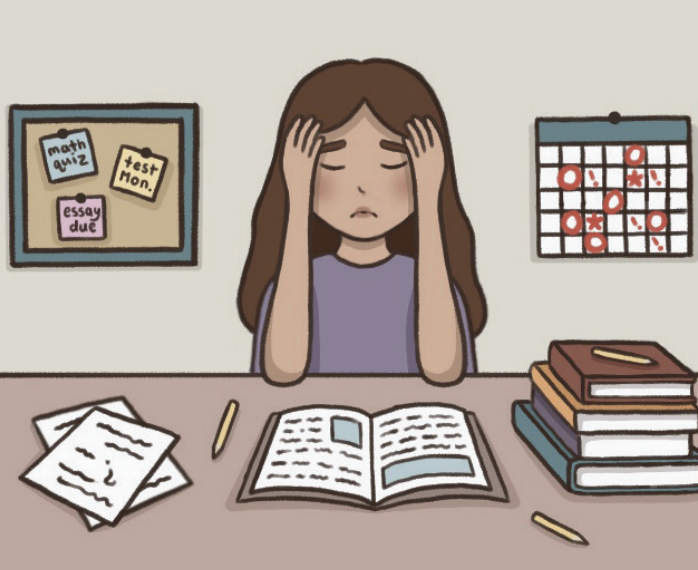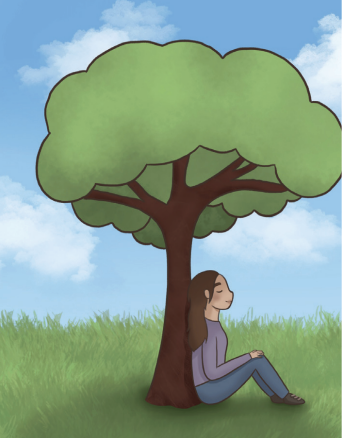CON by Cami ’20
Trigger warnings—disclaimers put on material that could provoke memories of past trauma—are the trendiest threat to free speech, particularly on college campuses.
Though the usage of trigger warnings in educational contexts has altruistic intentions, warnings have become a widespread form of censorship that suppresses discussion and fosters trauma in the very students they are intended to protect.
With no bright line defining what requires a warning, once trigger warnings are implemented they are used excessively.
A survey of 800 college professors by the National Coalition Against Censorship found that students have demanded trigger warnings for topics including childbirth, fatphobia, spiders, blood and indigenous artifacts.
The University of Michigan’s website lists animal death, body hatred, pregnancy and classism as topics that should come with warnings. Recently, Harvard Law students asked professors to stop teaching rape law and to avoid the word “violate” for fear of triggering students.
Trigger warnings have also been tacked onto pieces of classic literature: “Mrs. Dalloway” for suicidal ideation, “Things Fall Apart” for religious persecution and colonialism and “The Great Gatsby” for misogyny.
Oberlin College’s trigger warning policy included the reminder that smells, songs and places could be triggers and suggests that materials that might trigger students should be avoided or made optional.
Not only do warnings explicitly impede educational efforts through curriculum limitations, but they also promote constant self-censorship for fear of triggering others.
Warnings prevent effective discussion on campus by allowing students to opt out of exposure to ideas that challenge their own beliefs or are outside of their comfort zones. This practice chills dialogue with ideological opponents, which is particularly concerning in the age of media echo chambers and peak political polarization.
Proponents of trigger warnings argue that some censorship is necessary to make education more accessible to trauma survivors.
Many psychologists, however, argue that the best way to overcome Post Traumatic Stress Disorder is through the rewiring of the brain via gradual exposure to triggering ideas until they are no longer associated with violence. Classroom settings could function as part of a larger, systematic exposure program before students venture into the outside world where they will in all likelihood be exposed to ideas they find upsetting. Routine trigger warnings can also trivialize PTSD. They assume that a sizable portion of students, through exposure to classism or body negativity, face psychological trauma analogous to that experienced by survivors of war or assault. Furthermore, trigger warnings can promote anxiety and vulnerability in students who are not struggling with PTSD.
A Harvard study showed distressing passages to 270 “trauma-naive” participants, half of whom were randomly assigned to receive trigger warnings. Those who received trigger warnings later reported perceiving themselves and trauma survivors as being more emotionally vulnerable and reported feeling more anxiety provoked by the passage. The study noted that those receiving trigger warnings might have an increased risk of developing PTSD in response to future trauma because the way experiences are framed affects resilience.
Students receiving trigger warnings might normalize PTSD symptoms as responses to trauma even though, in reality, developing PTSD is relatively rare.
More broadly, freedom of speech is one of the most important rights we are afforded as citizens. Rigorous, unfettered debate and engagement in the marketplace of ideas is the primary mode through which we can escape our echo chambers, confront our unexamined beliefs, exercise our critical faculties, grow intellectually, challenge existing structures of domination, understand one another and find truth. Some unease is an inevitable part of this process.
PRO by Elizabeth Vitanza
As a teacher, posting a trigger warning or a content warning for a course costs me nothing. By demonstrating to my students that I care about them, I can create a cohesive and trusting classroom environment. If I establish that content is challenging and that students have a choice, students may feel more supported in our discussions.
Just as I rely on ratings when I decide what to let my son watch, so too do I find content warnings on news articles or online essays helpful for determining whether or not to engage with that reading at that moment. A content warning never prevents me from reading or watching or discussing the content unless I make the choice not to do so. What a trigger warning does do is send a message that the person delivering the content has a modicum of respect and awareness for their audience’s … comfort? security?
This debate is analogous to the one around pronouns. Taking the time to ask you which pronoun you prefer is not political correctness run amok or the degradation of English grammar; rather, it is an attempt at treating you like a human being worthy of dignity and respect upon learning about the importance of trans visibility and tolerance, as well as updating my language to meet the needs of 21st century speech.
What is the downside to a trigger warning? A student feeling supported? Research in education indicates that the number one predictor of student success is whether or not a student feels like their teacher cares about them. What easier way for me to show I care than to say, “So, this film has a lot of violence in it. If you need to take a break or don’t want to watch it, I can make arrangements for that.”
Finally, when entering into cultural debates like these, I always consider who is arguing which side. In this case, it is mainly white cisgender people who have taught on college campuses since the Reagan administration who lament content warnings as the downfall of education. These are the very groups for whom it may be surprising that many people of color, women and young people (who have grown up in a world of school and police shootings where high-profile sexual assault and harassment goes unpunished) appreciate getting a heads-up about potentially upsetting violent content.
Changing our behavior to foster better learning outcomes has been done before. Not so long ago, during my childhood, many parents still thought it was important to hit children to “teach them lessons.” Most schools had laws allowing staff to give corporal punishment. Today’s anti-trigger warning adherents make many of the same alarmist arguments made by the pro-spanking side back then: “Kids would be soft.” “Kids wouldn’t learn.” “That wasn’t the way we grew up.”
Implicit in the anti-warning arguments, then, is that a student must suffer to learn, that it is onerous to be kind, or worse, that teachers should act as rogue therapists, re-traumatizing students to help them “get over it.” Each of these ideas runs counter to everything we know today about child psychology and effective teaching. We should try content warnings for a while and see if maybe, just maybe, we can make the world a slightly kinder place and improve student learning outcomes in the process.







